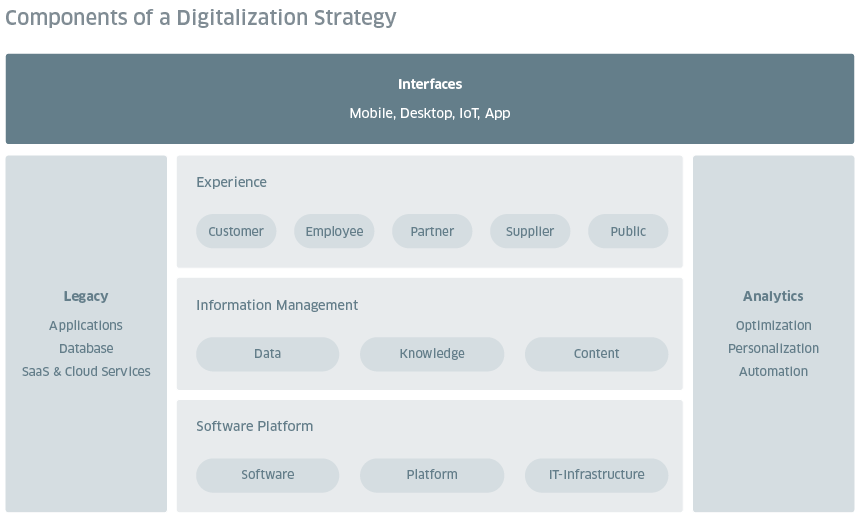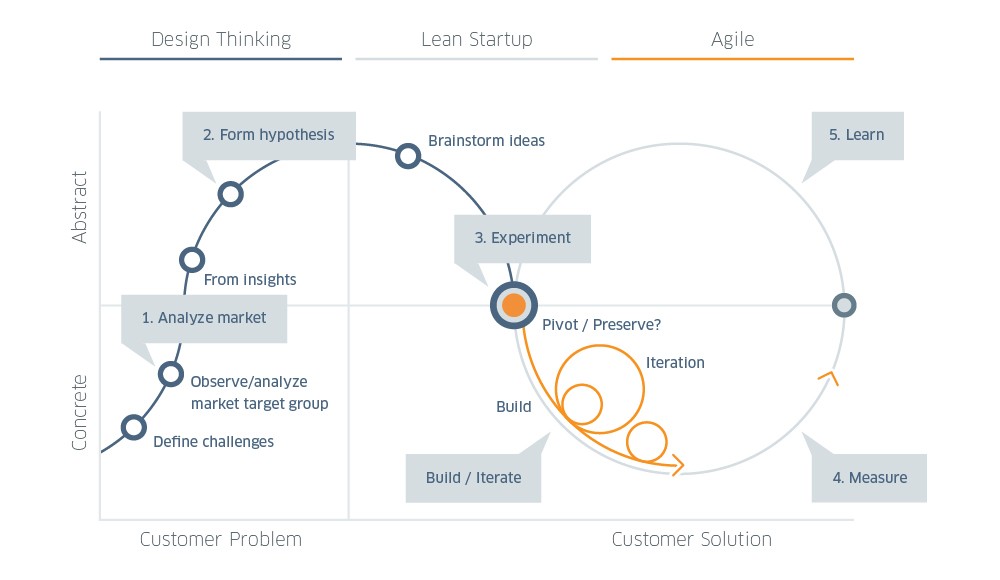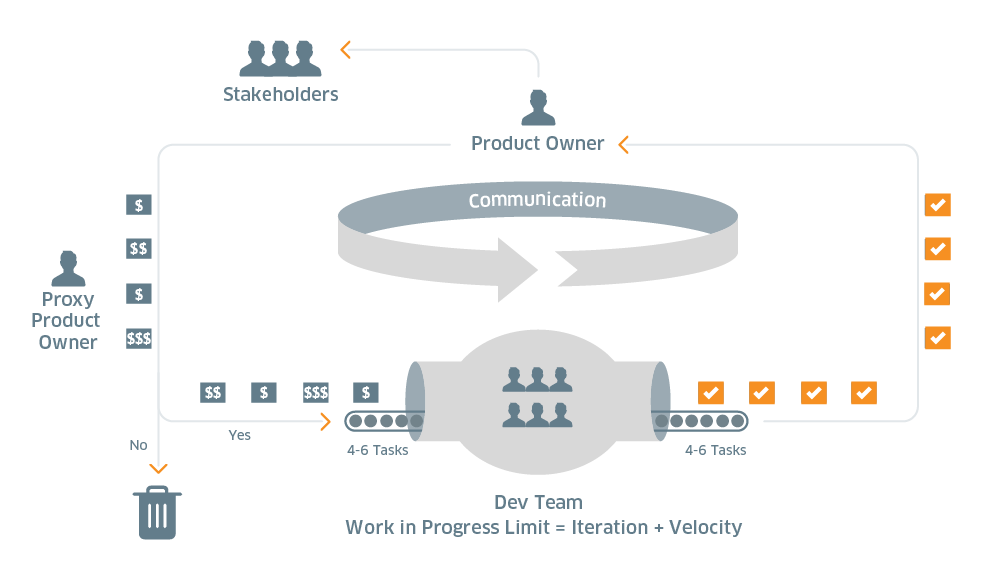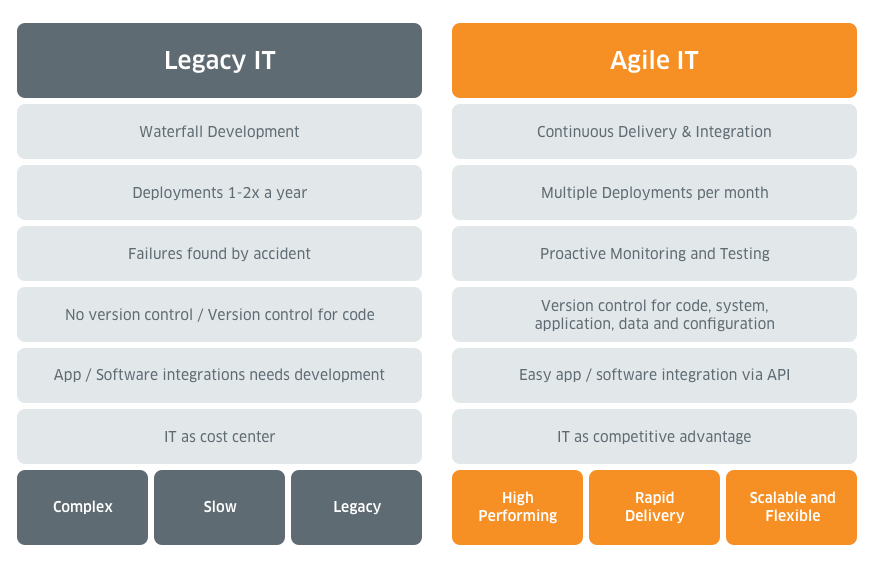Get in touch
The topic of digitalization or digital transformation is a frequently used buzzword – but what does it mean for organizations in particular? And how can companies successfully enter the digital future? We provide an overview of the topic of digitalization and how companies shape digital transformation to their advantage.
Digitalization or digital transformation describes the continuous change process to digital processes, based on a sophisticated IT infrastructure, digital applications and optimally networked systems and data. The existing business model is digitally mapped and/or new digital products are developed. Information, communications, processes and services are networked via digital platforms.
Digital transformation leads the fusion of online and offline, disruptive technologies and the radical change of entire industries. Automation, optimization, autonomy of processes as well as more flexibility and individuality of products and services are just some of the benefits and opportunities of digitalization. The process also leads to innovative business models and digital products. The most common drivers of progress are increased customer expectations and competition in the market.
In order to make digitalization successful, the appropriate prerequisites must be created.
Five important components of successful digitalization include:
The starting point for digitalization is the development of a digital strategy. This includes digital transformation of the core business and the development of new digital business segments. Digitalization drivers are often the IT departments, but specialist departments and management must also support the digital strategy as well as. After all, all areas of the company are affected by digitalization.

In order to make digitalization successful, the necessary prerequisites must be created within the company. There are 3 variants for setting up a digital organization:
The variant of spinning off a digital unit makes it possible to test digital and agile approaches in a sheltered environment. At the same time the existing business of the parent company is protected. Successfully tested agile processes and methods can later be transferred to the parent company.
The digital strategy forms the basis for developing digital business models. Modern methods are used to analyze challenges and problems, create ideas and fine approaches to resolving issues. It is important to convey methodological expertise to the entire organization. Design Thinking and Lean Start-up are particularly helpful in this regard.

Design Thinking is an approach to problem solving and finding ideas, based on user perception, as well as user needs and motivations. A large number of methods with a focus on user orientation, visualization, simulation and iterative processes is used. Examples include personas, interaction processes and touchpoints with customers, taking into account their preferences, experiences and emotions. Design Thinking is based on the assumption that the collaboration of people of different disciplines in a creative environment can solve problems better.
Lean Startup is a method for the rapid development of organizational units or products with the leanest possible processes and little capital expenditure. The focus is on a reduced conceptual phase, a short time-to-market and the fastest possible creation of a prototype on the market. The prototype is continuously developed in short, iterative product release cycles. At the same time, it is possible to react quickly to validated learning-by-doing experiences and customer feedback and wishes at no great cost.
The appropriate methodological competence is of fundamental importance for the success of a digital organization. It is needed to meet challenges as well as to develop and efficiently implement digital business models. This applies to structures, methods and processes as well as the culture within the company. According to survey, most projects and business startups fail at the operative level – and not because of bad ideas.
In order to implement digital business models efficiently and effectively, to bring prototypes to the market quickly and to react flexibly to customer feedback and market changes, an iterative approach with agile methods offers a considerable advantage. The establishment of agile methods applies to the methodology of software development and project management, including processes and structures, as well as corporate culture.

Agile software development means regular software releases in short, iterative cycles, with the ability to deliver functional software early in the project (“release often, release early”). On the user’s side the focus lies on: Instead of long meetings and “Death by Discussions” in committees, adaptations are implemented based on user feedback and the reactions are then tested. To establish agile approaches in product development, an agile step-by-step transformation of the IT department is necessary.
The flexibility and agility of an organization depends on the flexibility of its IT infrastructure. In order to use agile methods in dynamic markets and to react quickly to changing requirements, the IT infrastructure and architecture must support this. This means: the rapid provisioning of development infrastructure is an important precondition for digitalization and is an advantage of the organization.

One approach for flexible IT is Strategic Domain Driven Design for modeling large applications and systems. In doing so, professional concepts (“bounded contexts”) are programmed as completed functions of a core competency, which can be easily linked to other applications.
One example is the function “Price calculation with discounts”, which can be linked to other functions such as “discounting for major customers”. In this way, new functions don’t need to be programmed every time changes in the IT system requirements are carried out. Instead, only links to the existing bounded contexts need to be created, making the IT much more flexible and faster. These professional incursions must be developed in line with the corporate strategy.